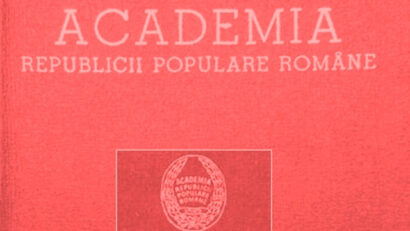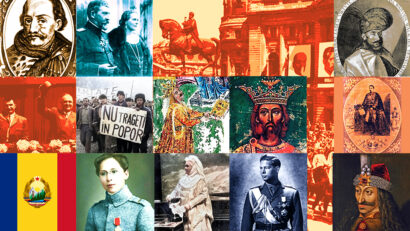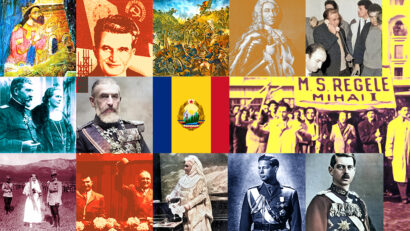Romanticism and national identity
Romanticism was a literary and artistic movement that placed ethnicity and language at the heart of human existence.

Steliu Lambru, 11.09.2017, 12:09
Viewed as a product of western thought, Romanticism was often considered a reaction to the universalism of Classicism and to Cosmopolitanism. Tradition, the past and the language of a community shared by all its members were viewed as the fundamental elements on which Romanticism based its view of the world.
The nation state was the political expression of Romantic ideas. Romanian Romanticism was no exception to the rule, being the first example of synchronisation of the Romanian cultural space with Western ideas. In the three Romanian Principalities, Romanticism came from two sources: French Romanticism in Moldavia and Wallachia, and German Romanticism in Transylvania. Literary historian Ioan Stanomir will now explain the Romanian Romantic project and how it was received in the Romanian cultural space:
Ioan Stanomir: “Romanticism in Europe and in the Romanian cultural space projects a new image on ethnic communities. This image is actually a reinvention of their identity. It starts with the exploration of the archaeological and cultural heritage and ends with the creation of a pantheon of the nations ancestors and role models. This is a recipe that started from Western Europe and reached the Romanian cultural space with a significant delay. If we look at it from the perspective of aesthetic purity, Romanian Romanticism is a composite, eclectic strand of Romanticism. Many of the Romanian Romantic writers also wrote classical works, such as Grigore Alexandrescu. Other Romantics started as Romantic writers but ended up as classic writers, such as Vasile Alecsandri. There are few purely Romantic writers. Their Romanticism is today perceived as strident and impenetrable, such as the works of C.A. Rosetti. Romanian Romanticism observed the European formula in terms of the reinvention of the self. We have an entire inventory of images, from ruins and ancestors, to the evocation of the pasts military exploits.
The elites of Wallachia and Moldavia preferred the French Romanticism as a model for the ideas of modernisation and statehood, while the Romanians in the Austrian Empire took the model of the German Romanticism. Literary historian Ion Stanomir explains:
Ioan Stanomir: “The main difference between the two types of Romanticism is related to the definition of the nation. German Romanticism had an organicist, conservative and xenophobic strand. Its influence can be seen in the works of the 1848 writers and especially of the poet Mihai Eminescu. The latter was most strongly influenced by German Romanticism. Transylvania was influenced by the Enlightenment of the Josephinist type and by the idea of revolutionary ideology. But the revolution in Transylvania was paradoxical, because, in European terms, it was a counterrevolution, being a reaction to the xenophobic excesses of a European revolution per excellence, as was the case of the Hungarian revolution.
The 1848 revolution was the climax of Romanian Romanticism. It marked the beginning of reforms and of modernisation in this area. Literary historian Ioan Stanomir tells us more:
Ioan Stanomir: “Romanian Romanticism is represented by the 1848 movement. Its members were all involved, more or less successfully, in politics, by setting up cultural and literary societies and secret societies, in exile, and in the affairs of the country after they returned from exile, around the period 1860-1870, when in fact little had been left of the former movement. Some of these Romantics fell into obscurity, such as Grigore Alexandrescu, others went through a period of mutations and metamorphoses, such as Heliade Rădulescu, while others simply died, such as Nicolae Bălcescu, whose example was later used by the communist propaganda. There were also Romantic writers who abandoned their literary careers and devoted themselves entirely to politics such as C.A. Rosetti. There were other Romantics like Bolliac who was more of a journalist than a poet. It was a group of writers that Paul Cornea called the initiators of a new trend.
Romanticism has in the meantime become a cultural model, giving rise to a form of standardised culture. Ioan Stanomir explains:
Ioan Stanomir: “An example of standardised and oversimplified reception is the writer Dimitrie Bolintineanu, who is best remembered for his historical legends, now seen as a kind of textbook for 1848 patriotism. Historical legends became a sort of behavioural guidebook and a way to immortalise certain historical figures, lending them a mythological aura. This type of focus ignores, for example, Bolintineanus deepest and most vibrant romantic opera, the poem Conrad, which is a Romanian equivalent of sorts of Byrons Childe Harold’s Pilgrimage. Byronism was also in fashion among Romanian Romantics, who could not resist the temptation of imitating Byrons writing style.
National unity was the key to the idea of national modernisation and emancipation proposed by Romanticism, says Ioan Stanomir:
Ioan Stanomir: The concept of national unity was born out of the 1848 movement. Todays canonical image of ruler Michael the Brave is in fact the invention of Florian Aaron and Nicolae Balcescu, and especially of Gheorghe Bibescu, who used the rulers cloak during official ceremonies. National consciousness is an anachronistic formula that we ourselves project in order to explain behaviours that have nothing to do with how they were perceived in their day. The 1848 Romantics wanted the union of the principalities. Things were more complicated as regards Transylvania and Banat, because the latter were home to a federalist trend that took them closer to Central Europe than towards the Carpathians. We shouldnt forget that the Romantics in Transylvania and Banat had a complicated relationship with the Austrian Empire, many of them aligning themselves with the Empire in order to resist Hungarian republicanism.“
Romanticism was an artistic movement, a political model and a social trend based on emotions and feelings, which may explain why it still enjoys a good image today.





























